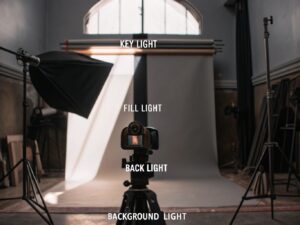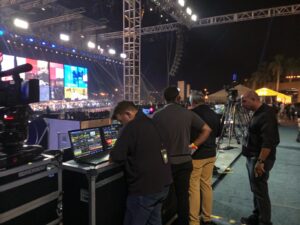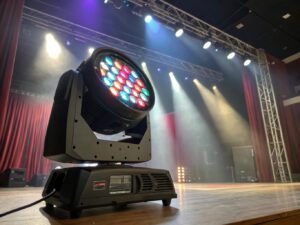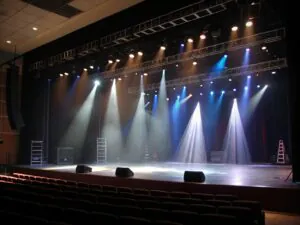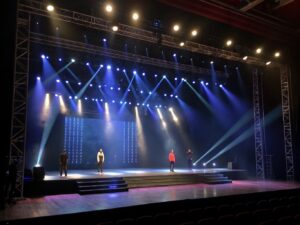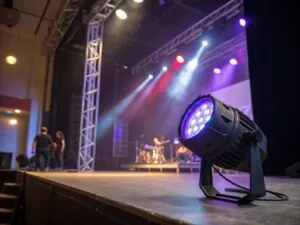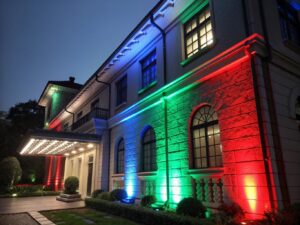
Is your stage lighting flat and uninspired? Are your actors visible but lacking dramatic impact? The right approach turns simple illumination into powerful storytelling.
Lighting a theatre stage properly involves balancing visibility with mood. Start with a foundational wash using methods like McCandless, then layer on specials, backlights, and color to create focus, shape the actors, and evoke the emotional tone of the scene.

After 19 years in stage lighting, I can tell you that lighting a theatre is a unique art form. It's not like a rock concert where flash and movement are king. Theatre lighting is about subtlety, about guiding the audience's eye, and about serving the story. Every light you hang has a purpose. It's a craft that combines technical skill with artistic vision. Getting it right can make a good performance unforgettable. Let's walk through the principles and practices that make it happen.
How do you properly light a stage?
Worried that your lighting makes actors look flat and two-dimensional? Even illumination can wash out all the natural features and emotional expressions you want to highlight.
To properly light a stage, start with motivated, three-dimensional light1. The McCandless Method is the classic starting point, using two lights on an actor from the front, creating natural-looking form and ensuring visibility from all angles.

The goal is to make the actors look natural and three-dimensional, just like they do in real life. Stanley McCandless developed his method to achieve this. The core idea is to divide your stage into acting areas. For each area, you hang two lights from the front. One is placed 45 degrees to the left and 45 degrees up. The other is 45 degrees to the right and 45 degrees up. You then give them slightly different colors. Traditionally, one side is a warm color (like a light pink or amber) to act as the key light, and the other is a cool color (like a light blue) to act as the fill light. This combination sculpts the actors' faces beautifully, creating highlights and shadows that show their expressions clearly. It’s a technique I’ve seen used countless times, and it simply works.
The McCandless Method Explained
| Lighting Angle | Color Motivation | Purpose |
|---|---|---|
| 45° Left/45° Up | Warm (e.g., "sunlight") | Acts as the Key Light, defining features. |
| 45° Right/45° Up | Cool (e.g., "sky reflection") | Acts as the Fill Light, softening shadows. |
| Result | N/A | Creates natural, three-dimensional visibility. |
What are the directions for lighting in theatre?
Does your lighting design feel repetitive? Using only front light makes every scene look the same. To create dynamic looks, you must master lighting from all directions.
Key lighting directions in theatre include front light for visibility, back light for separation, side light for sculpting bodies, and top light (or downlight) for creating dramatic isolation. Each direction serves a distinct artistic purpose.

Thinking about the direction of light is where a technician starts to think like a designer. Each angle tells a different story. Front light is the most basic; it's all about visibility. But if you only use front light, your stage will look flat. Back light is a secret weapon. Hitting an actor from behind creates a beautiful halo effect. This simple trick visually lifts them off the background, adding incredible depth. Side light is the favorite for dance and movement-heavy shows. It rakes across the body, highlighting the form and muscles of the performers. And top light, shining straight down, is perfect for creating high drama. It can isolate a single actor in a pool of light or create a moody, mysterious atmosphere. In my experience, the best designs layer these directions to create a rich visual texture.
The Effect of Lighting Angles
| Direction | Primary Use | Artistic Effect |
|---|---|---|
| Front Light | General visibility, facial features. | Can feel flat, like a presentation. |
| Back Light | Separation from scenery. | Creates a "halo" effect, adds depth. |
| Side Light | Sculpting forms, highlighting movement. | Dramatic, emphasizes shape, great for dance. |
| Top Light | Isolating areas, dramatic effect. | Moody, confined, can create harsh shadows. |
How does theatre lighting work?
Feeling lost in a sea of DMX cables2 and addresses? The connection between the console and the lights can seem like magic, but the process is logical and easy to trace.
Theatre lighting works with a control system. A technician operates a lighting console3, which sends a digital signal (usually DMX512) through cables. This signal tells each specific lighting instrument what to do, including its brightness, color, and focus.
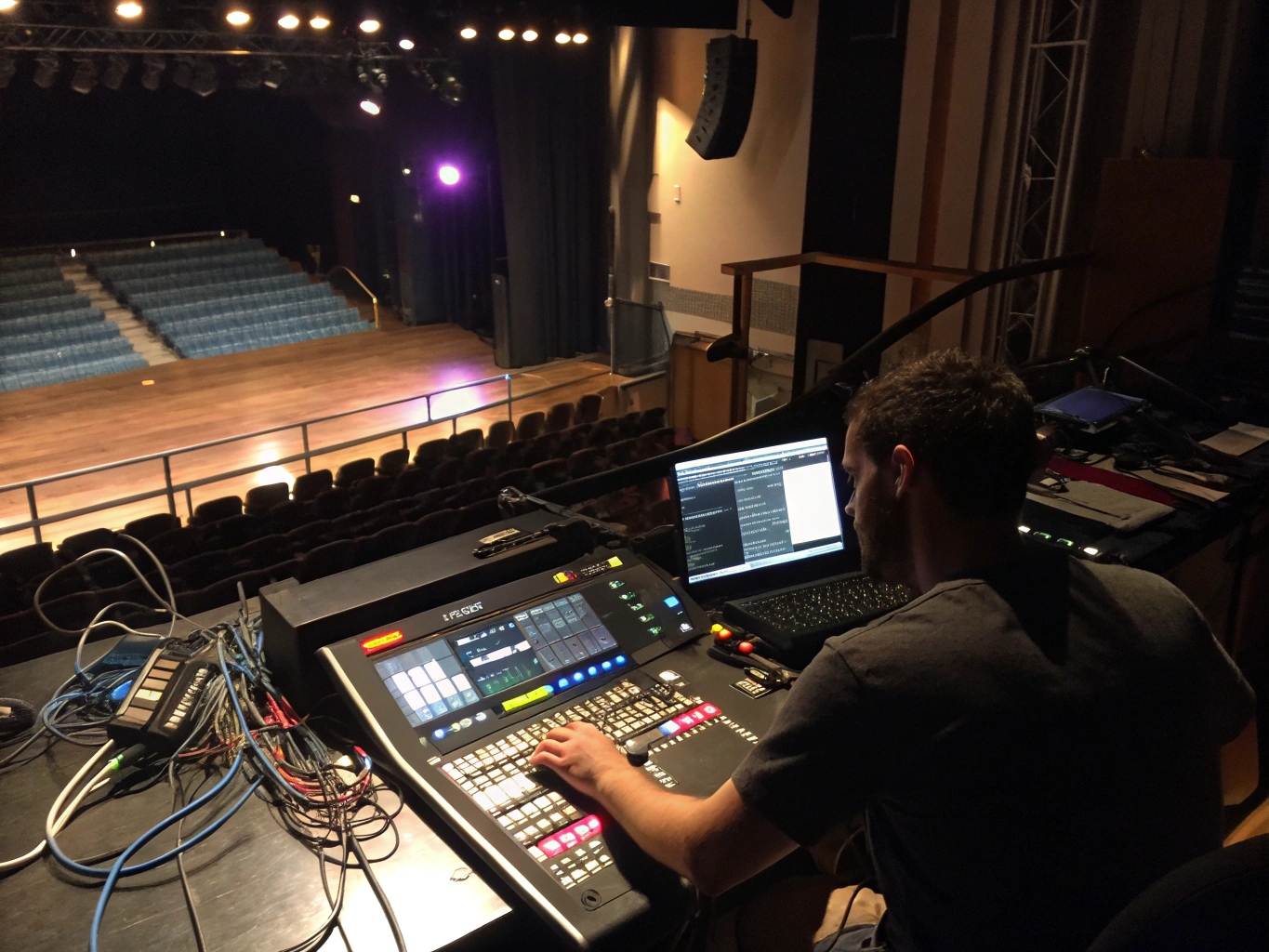
The whole system is a chain of command. It starts at your lighting desk, or console. When you bring up a fader or press a button, the console generates a DMX signal. This signal is a language that all modern stage lights understand. The signal travels out of the console through a DMX cable to the first light in your rig. That light "listens" for the instructions addressed to it, then passes the rest of the signal along to the next light through another cable. This is called a "daisy chain." Each light needs a unique DMX address, which you set on the fixture itself. You then tell the console which address corresponds to which light in a process called "patching." Over my 19 years, I've spent many hours troubleshooting these systems. Almost always, the problem is a bad cable or two lights accidentally set to the same address.
What do I need for stage lighting?
Tasked with putting together a stage lighting system4? It’s more than just buying some lights. To avoid costly oversights, you need to think about the entire system.
A complete stage lighting setup requires four essential elements: the lighting instruments5, a structure to hang them on, a control system (console and cabling), and a comprehensive lighting plot that acts as your blueprint for installation.

I always advise clients to think in terms of a complete package. First, you need the instruments. For theatre, your core tools will be ellipsoidals (like Lekos) for their sharp focus and shutters, and Fresnels or LED PARs for soft washes of light. Second, you must have a safe structure. In a theatre, this is usually a system of steel pipes called battens that are flown in and out. Third, you need the control system. This includes the lighting console, all the DMX and power cables, and any dimmers required for older conventional lights. Modern LED fixtures from us at Monalight often only need power and a DMX signal. Finally, you need the plot. This is the master document, the blueprint created by the designer that shows you exactly which light goes where. Without a clear plot, setup becomes chaotic and inefficient.
Basic Theatre Lighting Kit
| Component | Function | Theatre-Specific Examples |
|---|---|---|
| Instruments | To create light | Ellipsoidals (Lekos), Fresnels, LED PARs |
| Structure | To hang instruments safely | Onstage battens, front-of-house positions |
| Control | To operate the system | Lighting Console, DMX cabling, Dimmers |
| Design | To guide the setup | The Lighting Plot and instrument schedule |
Conclusion
Lighting a theatre is about using the right tools and techniques to serve the story. By combining proper direction, control, and equipment, you create a world for the actors to inhabit.
-
Learn about motivated lighting to create depth and realism in your performances. ↩
-
Learn about DMX cables and their crucial role in controlling stage lighting systems. ↩
-
Discover how a lighting console operates and controls the entire lighting setup. ↩
-
Understand the essential components required to set up an effective stage lighting system. ↩
-
Find out which lighting instruments are crucial for creating effective stage lighting. ↩
You may also be interested in:
